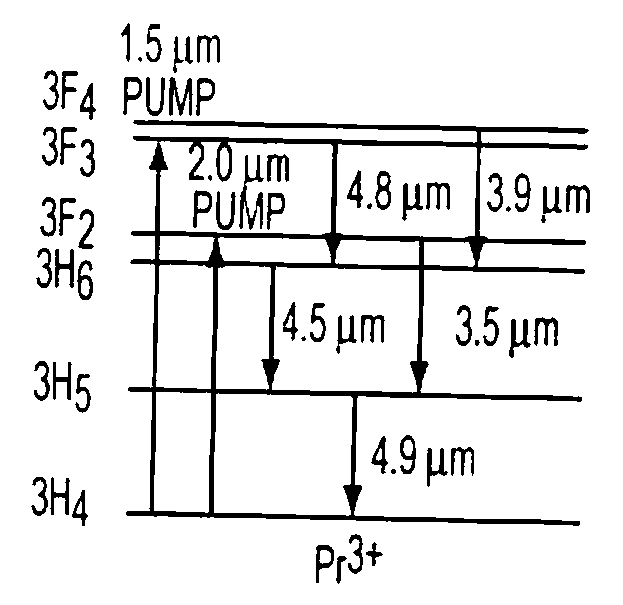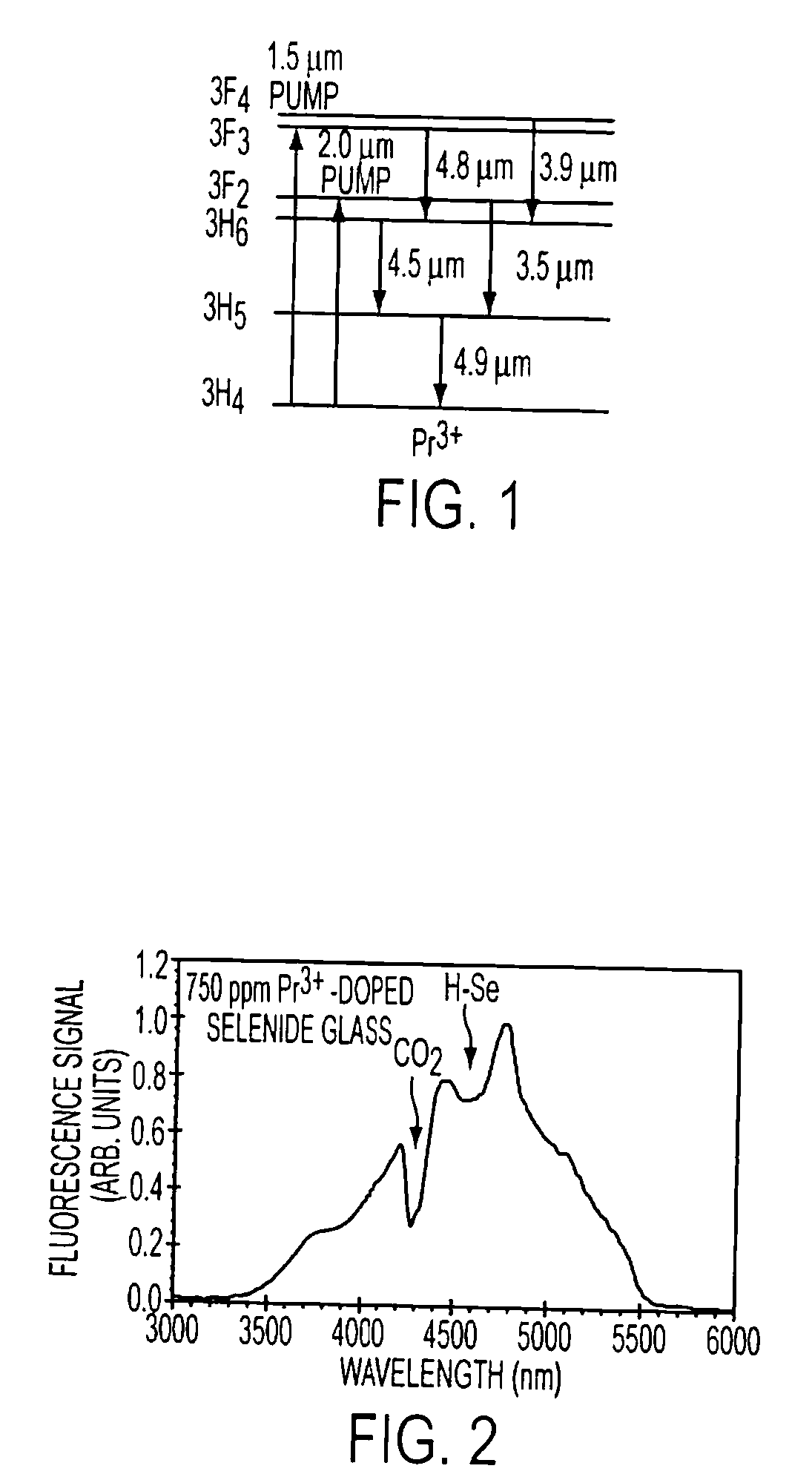Doped fiber scene projection system and method
a fiber scene and fiber projection technology, applied in the direction of waveguides, picture reproducers using projection devices, instruments, etc., can solve the problems of resistor array technology not meeting the requirements of such testing, limited temperature simulation by the array, and prior art resistive approaches can only generate “cool” scenes, not “hot”
- Summary
- Abstract
- Description
- Claims
- Application Information
AI Technical Summary
Benefits of technology
Problems solved by technology
Method used
Image
Examples
example 1
[0033] This example demonstrates the embodiment of FIG. 3, i.e., the four emitter, high brightness fiber source infrared simulator for hardware-in-the-loop simulation system.
[0034] Laser 32 was a 5 watt commercially available pump laser operating at 2 μm. The output fiber 42 from the laser was fusion spliced to a 1×2 50 / 50 splitter 34 operating at a wavelength of 2 μm. The arms 44,46 of splitter 34 were fusion spliced to two similar 1×2 splitters 36,37, effectively dividing the output pump light into four individual and equal power channels 40(a)-(d), which were standard silica fibers SMF-28. The outputs of the final chain of the 1×2 splitters were fusion spliced to fiber optic variable optical attenuators 38(a)-(d). The variable optical attenuators act as attenuators and modulators in each channel to control the pump light power and temporal characteristics. Each variable optical attenuator was capable of about 30 dB dynamic range and about 15 ms temporal response for modulation. ...
example 2
[0035] This example demonstrates the embodiment of FIG. 5, which shows a schematic of a high resolution n×n infrared scene simulator based upon the fiber technology. Here, each channel was coupled to each element of an n×n fiber array (n×n=N total elements) which was used to project a scene with a resolution of n×n pixels. The fiber array was constructed from a bundle of individual rare earth doped infrared fibers but can also be constructed from a rare earth doped glass extruded through a structured hole capillary plate with n×n holes.
example 3
[0036] This example shows the embodiment of FIG. 6, which shows a schematic of a of an alternate embodiment of the infrared fiber simulator. Here, a single infrared fiber source 62 is used. The infrared fiber source is split into n×n channels using a cascaded 1×2 chalcogenide 50 / 50 fiber coupler. The output of each coupler in the cascade is coupled to an infrared fiber based variable optical attenuator which controls the modulation and attenuation of each channel to achieve control of the temporal and spatial dynamics of the generated scene.
[0037] The use of rugged fiber optic components is a desirable advantage for these systems. Current resistor arrays systems are subject to pixel burnout, environmental aging and short life cycles and low yield during fabrication. As a result, commercially available resistor array scene projectors are very expensive to purchase and maintain. Also, they require external cooling resources and environmental resources to maintain their stability and ...
PUM
| Property | Measurement | Unit |
|---|---|---|
| core diameters | aaaaa | aaaaa |
| wavelength | aaaaa | aaaaa |
| wavelength | aaaaa | aaaaa |
Abstract
Description
Claims
Application Information
 Login to View More
Login to View More - R&D
- Intellectual Property
- Life Sciences
- Materials
- Tech Scout
- Unparalleled Data Quality
- Higher Quality Content
- 60% Fewer Hallucinations
Browse by: Latest US Patents, China's latest patents, Technical Efficacy Thesaurus, Application Domain, Technology Topic, Popular Technical Reports.
© 2025 PatSnap. All rights reserved.Legal|Privacy policy|Modern Slavery Act Transparency Statement|Sitemap|About US| Contact US: help@patsnap.com



